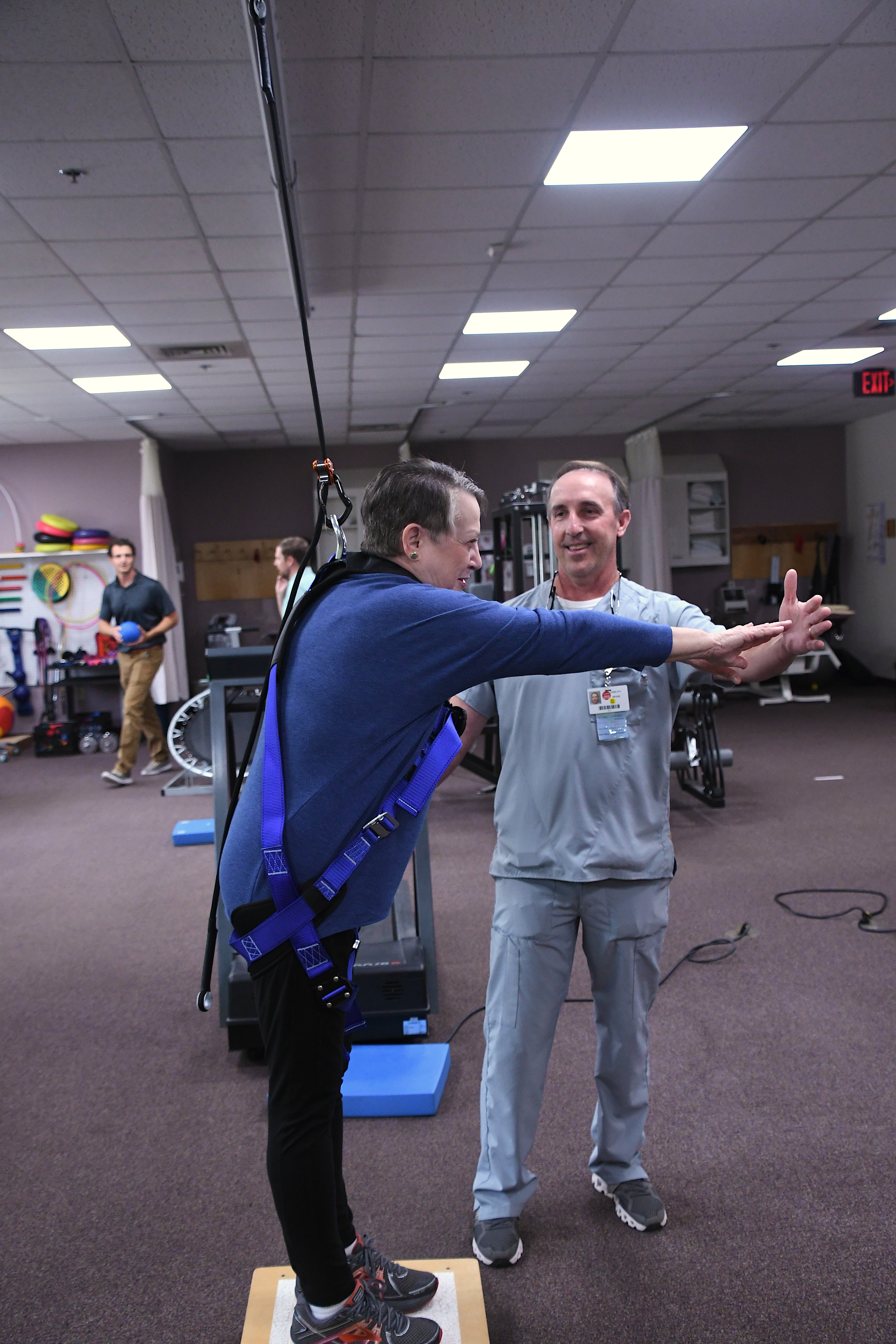Memorial Outpatient Rehab acquires new harness support
Published 12:09 pm Monday, July 25, 2022

- Roslyn Palmer tests out Memorial Outpatient Rehab’s new harness system while exercising on a balance board.
|
Getting your Trinity Audio player ready...
|
Memorial Hospital’s outpatient rehab facility has recently added a new tool to provide a safer and more effective way to go through the rehabilitation process: a ceiling mounted track and supportive harness system. This is an effective tool to be used by patients who have difficulty standing or walking. This system is a fall prevention tool that allows patients to overcome their fear of falling and focus on improving their strength and balance. Once buckled into the harness and attached to the ceiling, a patient cannot fall, even if they were to lose consciousness. This system can also be used in more difficult balance exercises, such as in athletes who may be several months out from a surgery but are not ready to return to play. This system is an effective tool to be used on patients of most ages with diagnoses who have symptoms involving: lack of balance, weakness, lack of endurance, confusion, proprioceptive dysfunction or any situation where falling can be an issue.
The solo step system installed at the outpatient clinic has a weight limit of 390lbs and allows for 20 feet of track for walking or standing activities. This system is great for patients with a recent amputation who have received prosthesis and are learning to walk again, without an assistive device. Patients with neurological conditions such as recent strokes or vertigo can also benefit. It is difficult to provide a list of all the diagnoses that will be used with this system, but it will certainly include orthopedic surgeries such as total knee or total hip replacements, ACL repairs, and many common lower extremity fractures once weight bearing is appropriate.
“The solo step is similar to bowling with the gutter rails up,” Dr. Daryl Hall said. “It allows you to practice the correct way, but it’s not unpleasant when you fail. It takes the danger of falling out of the equation, and allows you to focus on getting back to life without fear of falling.”
As for its practical use among patients, he said, “We have been able to practice activities and challenge patients in ways that would not have been possible before due to fear of falling, especially in the geriatric patients who do not want to rely on a cane or a walker, but feel like they are forced to do so to avoid falling.”
“This is a safe way to practice while improving strength and balance with no consequences for failing,” he concluded.





